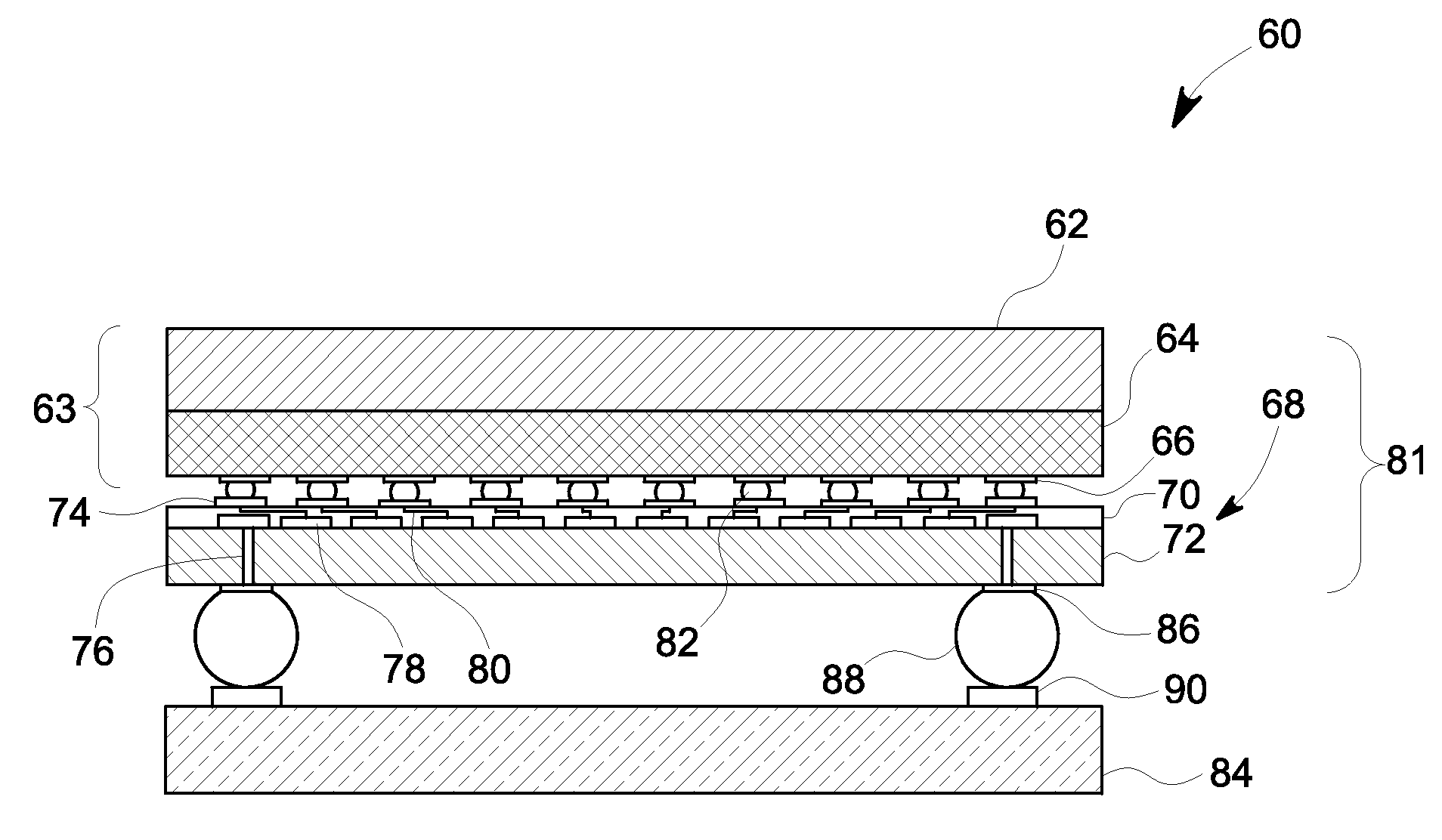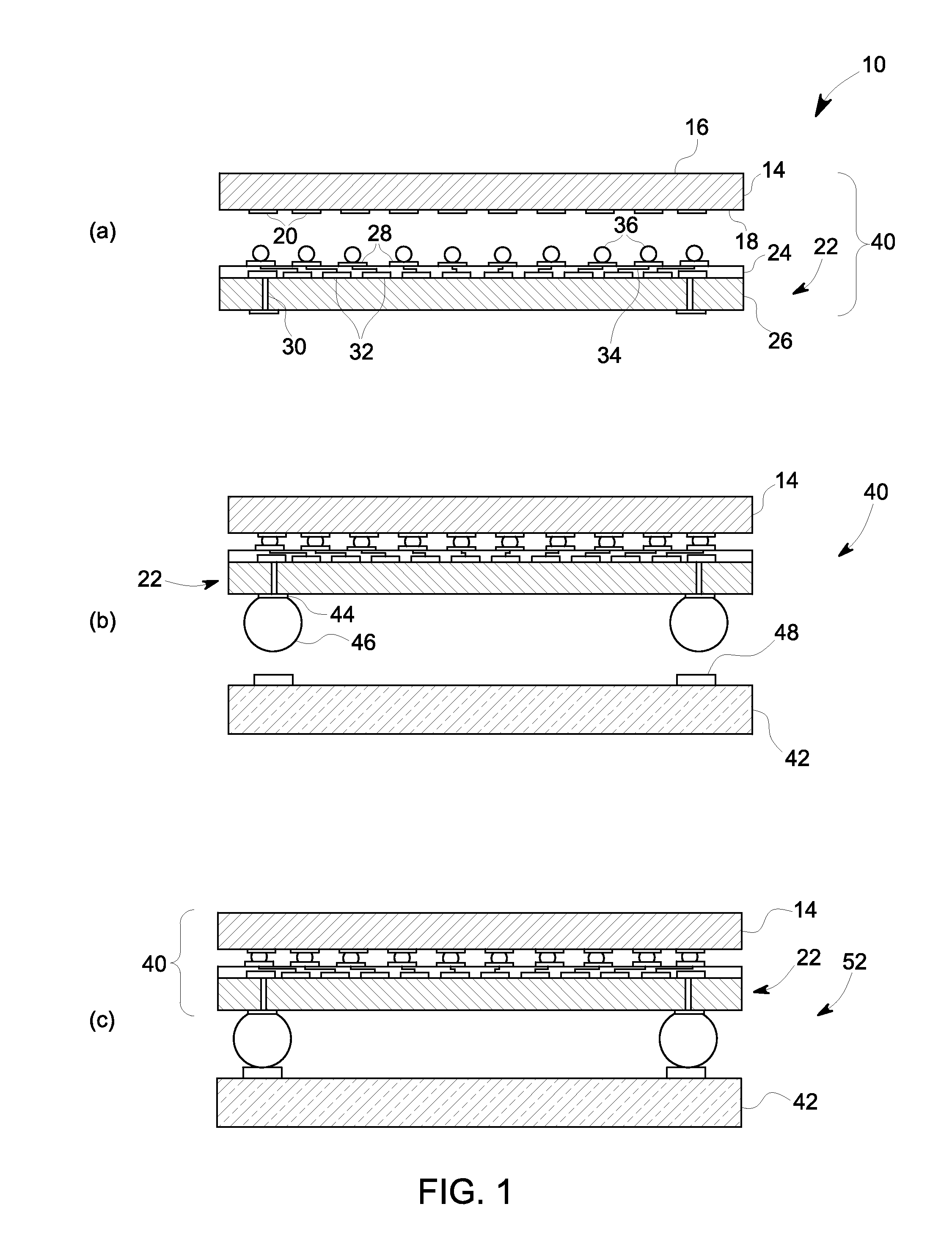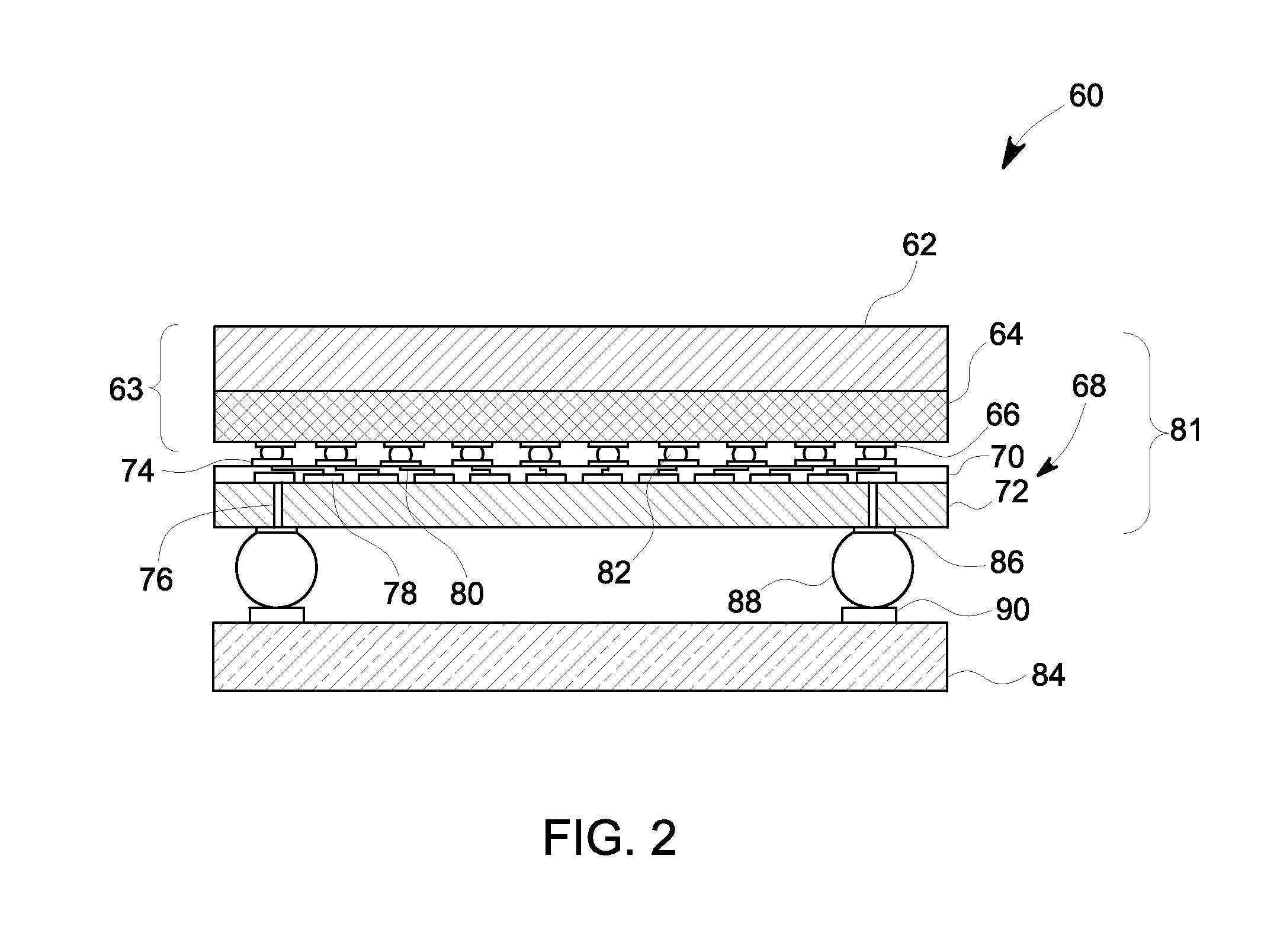Tileable sensor array
a sensor array and modular technology, applied in the field of sensor arrays, can solve the problems of reducing the maximum size of large-area sensors that can be profitably manufactured, affecting the performance of such large-area transducers, and affecting the quality of the produ
- Summary
- Abstract
- Description
- Claims
- Application Information
AI Technical Summary
Problems solved by technology
Method used
Image
Examples
embodiment 170
[0053]In accordance with further aspects of the present technique, the individual pluggable detector modules 150 of FIG. 7 may be tiled to form a larger tileable detector array. Referring now to FIG. 9, an embodiment 170 of one such large area detector array is depicted. In a presently contemplated configuration, a plurality of pluggable detector modules 150 is arranged in a determined pattern to form the larger detector array. Particularly, the individual pluggable detector modules 150 may be plugged into a motherboard 172 to create a large (M×N) tileable array, as depicted in FIG. 9. As will be appreciated, the motherboard 172 may include other components, such as, but not limited to, high voltage field programmable grid arrays (FPGAs), power conditioning circuits, regulators, direct current (DC) power supplies, and the like. Reference numeral 174 is generally representative of a socket disposed on the motherboard 172 that facilitates coupling the pluggable detector modules 150 to...
embodiment 206
[0059]FIG. 12 is a diagrammatic illustration of another embodiment 206 of a sensor module. In the embodiment illustrated in FIG. 12, a sensor array 207 is indirectly coupled to an integrated circuit 214 via an interposer 208. Accordingly, the sensor array 207 is operationally coupled to the interposer 208. As previously noted, the interposer 208 is an electrical interface routing between one connection to another. In certain embodiments the interposer 208 may include a rigid interposer, while in certain other embodiments, the interposer 208 may include a flexible interposer. By way of example, the rigid interposer may include a FR4 material, while the flexible interposer may include a polyimide. Additionally, the interposer 208 may include a ceramic material or an organic material.
[0060]In a presently contemplated configuration, a second side of the sensor array 207 is coupled to a first side of the interposer 208 to form a sensor array interposer stack. To facilitate this coupling,...
embodiment 280
[0075]In accordance with further aspects of the present technique, the sensor stack 246 may be operationally coupled to the interconnect layer 272 using copper pillars instead of or in combination with the gold stud bumps 278 of FIG. 15. FIG. 16 depicts another embodiment 280 of a sensor module, such as the sensor module 60 of FIG. 2. Particularly, in FIG. 16, the sensor stack 246 (see FIG. 14) is operationally coupled to an interconnect layer, such as the interconnect layer 272 (see FIG. 15) via use of copper pillars 282. Accordingly, copper pillars 282 are disposed on the second set of metal pads 242 to aid in coupling the sensor stack 246 to the interconnect layer 272.
[0076]According to further aspects of the present technique, the various embodiments of the detector modules described hereinabove may be employed in a medical imaging system, such as an ultrasound imaging system. FIG. 17 is a block diagram of an embodiment of an ultrasound imaging system 290. Furthermore, the ultra...
PUM
 Login to View More
Login to View More Abstract
Description
Claims
Application Information
 Login to View More
Login to View More - R&D
- Intellectual Property
- Life Sciences
- Materials
- Tech Scout
- Unparalleled Data Quality
- Higher Quality Content
- 60% Fewer Hallucinations
Browse by: Latest US Patents, China's latest patents, Technical Efficacy Thesaurus, Application Domain, Technology Topic, Popular Technical Reports.
© 2025 PatSnap. All rights reserved.Legal|Privacy policy|Modern Slavery Act Transparency Statement|Sitemap|About US| Contact US: help@patsnap.com



